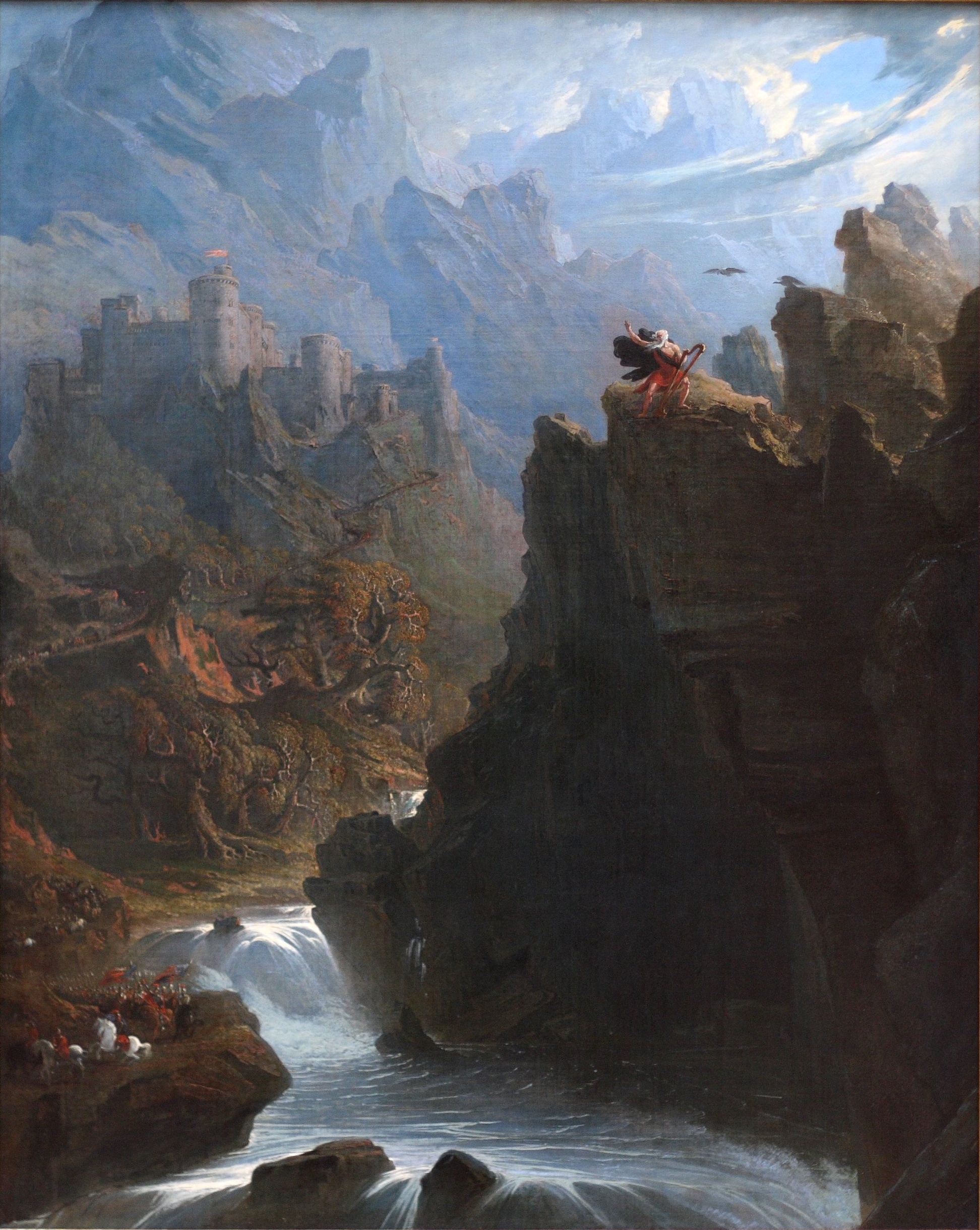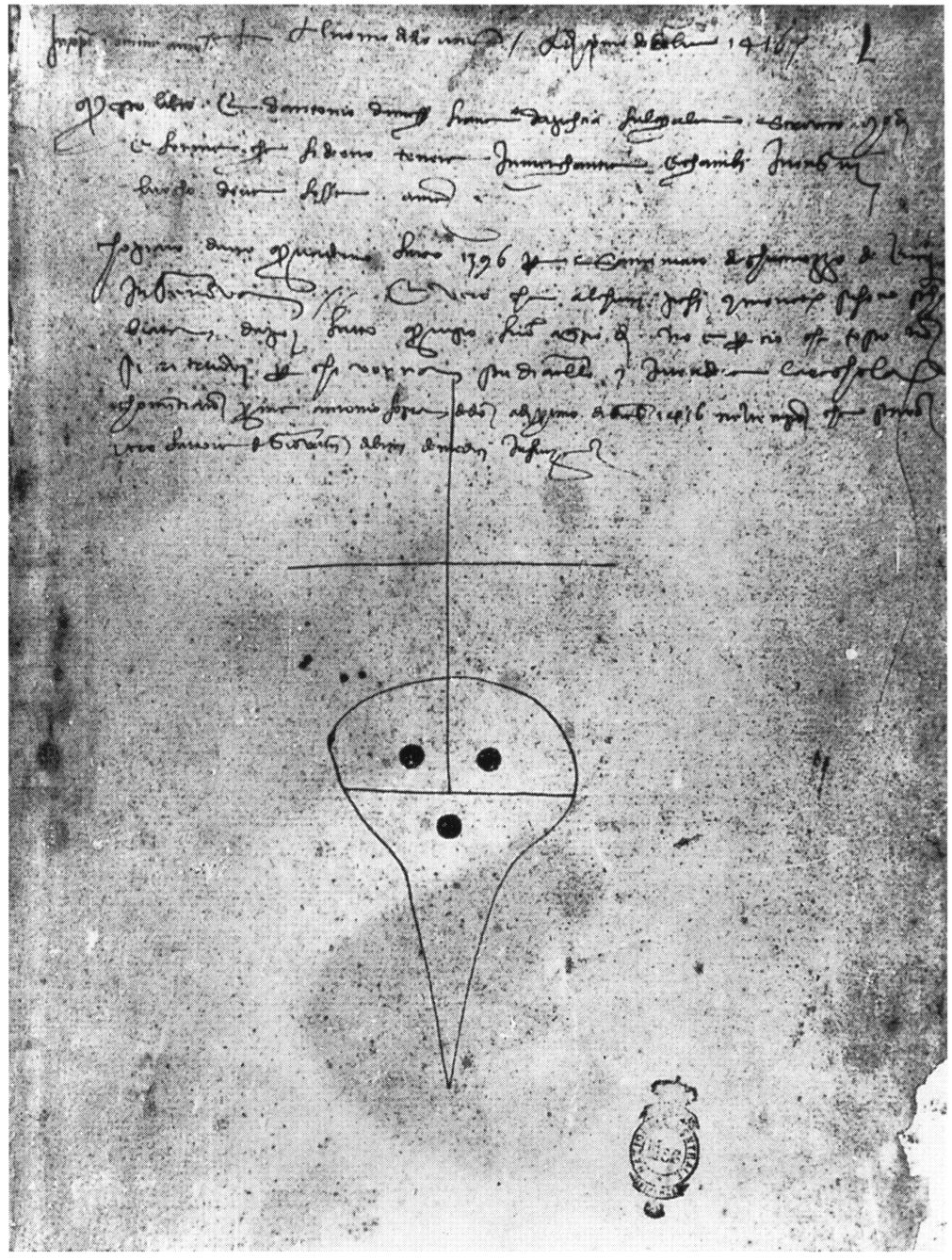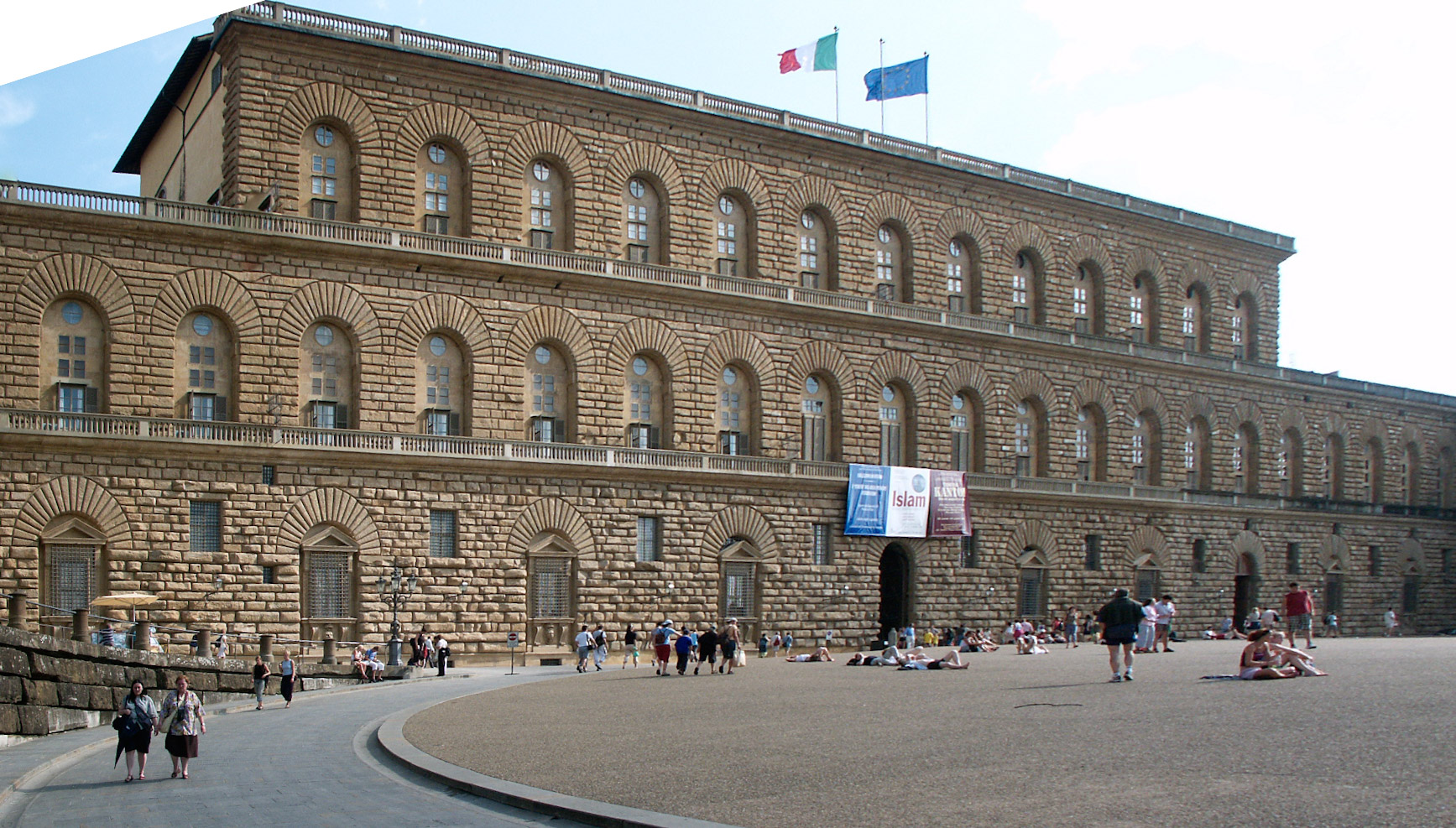|
Bardi (surname)
Bardi is an Italian surname. In the late Middle Ages, there were two noble families with this name. One, the Bardi family, was in Florence. A family that grew to have many branches, their name had originated as a Patronymic surname, patronymic derived from the name Berardo. The other family originated in Lombardy, and took the name as a Toponymic surname, toponymic after leaving the region. Origin The Bardi name of the Bardi family originated as a Patronymic surname, patronymic. The first record of the name was with Pagano di Bardo, who made a donation to a Florentine church in 1112. In his name, ''di Bardo'' refers to the given name Berardo, a Germanic peoples, Germanic name that was one of many common in northern Italy in the Middle Ages. Bardo's family was from Bagno a Ripoli, Antalla (in the wider Florence area), where they had owned the castle Ruballa, and was present in the Medieval commune, commune of Florence from the 11th century, owning much of the neighbourhood of Pidi ... [...More Info...] [...Related Items...] OR: [Wikipedia] [Google] [Baidu] |
Coa Fam ITA Bardi
Coa may refer to: Places * Coa, County Fermanagh, a rural community in County Fermanagh, Northern Ireland * Côa River, a tributary of the Douro, Portugal ** Battle of Coa, part of the Peninsular War period of the Napoleonic Wars ** Côa Valley Paleolithic Art, one of the biggest open air Paleolithic art sites * Quwê (or Coa), an Assyrian vassal state or province from the 9th century BC to around 627 BCE in the lowlands of eastern Cilicia ** Adana, the ancient capital of Quwê, also called Quwê or Coa * Côa (Mozambique), central Mozambique People * Eibar Coa (born 1971) Other uses * Coa de jima, or coa, a specialized tool for harvesting agave cactus * Continental Airlines, major US airline * c.o.a., coat of arms * Coa (argot) ( es), criminal slang used in Chile See also * COA (other) * ''Coea'', a genus of butterflies * ''Coua'', a genus of birds * Koa KOA (short for Kampgrounds of America) is an American franchise of privately owned campgrounds. Having more ... [...More Info...] [...Related Items...] OR: [Wikipedia] [Google] [Baidu] |
Bardd
In Celtic cultures, a bard is a professional story teller, verse-maker, music composer, oral historian and genealogist, employed by a patron (such as a monarch or chieftain) to commemorate one or more of the patron's ancestors and to praise the patron's own activities. With the decline of a living bardic tradition in the modern period, the term has loosened to mean a generic minstrel or author (especially a famous one). For example, William Shakespeare and Rabindranath Tagore are respectively known as "the Bard of Avon" (often simply "the Bard") and "the Bard of Bengal".Oxford Dictionary of English, s.v. ''bard'', n.1. In 16th-century Scotland, it turned into a derogatory term for an itinerant musician; nonetheless it was later romanticised by Sir Walter Scott (1771–1832). Etymology The English term ''bard'' is a loan word from the Celtic languages: Gaulish: ''bardo-'' ('bard, poet'), mga, bard and ('bard, poet'), wlm, bardd ('singer, poet'), Middle Breton: ''barz'' ('mi ... [...More Info...] [...Related Items...] OR: [Wikipedia] [Google] [Baidu] |
Robert De Bardis
Robert de Bardis was a 14th-century Chancellor of the University of Paris and a member of the Florentine Bardi banking family. He became chancellor of the Sorbonne in 1336. His financial resources placed him on the same level as the chancellor of Seville. de Bardis was a highly regarded scholar of St. Augustine and a friend of Petrarch. Involvement with heresy courts It is likely that the papal commission which prosecuted Nicholas of Autrecourt acquired information from the Bishop of Paris and de Bardis. In the spring of 1347 the examination of the ideas of John of Mirecourt began in response to a letter to the university from Pope Clement VI. After charges were brought against him, John of Mirecourt presented the written text of ''Lectura''. de Bardis submitted the text to a select group of regent masters who were given the work of evaluation. The task was a two-stage process which was similar to the proceedings against William of Ockham which took place at Avignon Avignon ... [...More Info...] [...Related Items...] OR: [Wikipedia] [Google] [Baidu] |
Giovanni De' Bardi
Giovanni de' Bardi (5 February 1534 – September 1612), Count of Vernio, was an Italian literary critic, writer, composer and soldier. Biography Giovanni de' Bardi was born in Florence. While he received a deep classical education, becoming proficient in Latin and Greek as well as learning the craft of music composition, his early years were largely spent as a soldier. Under Grand Duke Cosimo I of Tuscany he fought against Siena, and later he fought at the Siege of Malta (1565) against the Turks. After Malta, and now a captain, he assisted Maximilian II in defeating the Turks in Hungary. But when he was not away on military campaigns, he was busy in Florence and elsewhere as a patron of music and the arts. Bardi is mainly famous for being host, patron, and inspiration to the group of composers, music theorists and scholars who made up the Florentine Camerata, the group which attempted to restore the aesthetic effect of ancient Greek music to contemporary practice. The group ... [...More Info...] [...Related Items...] OR: [Wikipedia] [Google] [Baidu] |
Cosimo De' Medici
Cosimo di Giovanni de' Medici (27 September 1389 – 1 August 1464) was an Italian banker and politician who established the Medici family as effective rulers of Florence during much of the Italian Renaissance. His power derived from his wealth as a banker, and inter-marriage with other powerful and rich families. He was a patron of arts, learning and architecture. He spent over 600,000 gold florins (approx. $500 million inflation adjusted) on art and culture, including Donatello's David, the first freestanding nude male sculpture since antiquity. Despite his influence, his power was not absolute; Florence's legislative councils at times resisted his proposals throughout his life, and he was viewed as first among equals, rather than an autocrat.Martines, Lauro (2011). ''The Social World of the Florentine Humanists, 1390–1460''. University of Toronto Press. p. 8. Biography Early life and family business Cosimo de' Medici was born in Florence to Giovanni di Bicci de' M ... [...More Info...] [...Related Items...] OR: [Wikipedia] [Google] [Baidu] |
Contessina De' Bardi
Contessina de' Bardi (1390–October 1473), was an Italian noblewoman from the House of Bardi. Her marriage into the House of Medici provided her husband's family with much needed nobility, prestige, and military support as they established their power in Florence. Bardi family The Bardi family had been exceptionally rich for some time but following the collapse of the family bank in 1343, its importance was considerably reduced. They enjoyed some fame as suzerains and condottieri. The Medici called on them in this guise, on certain occasions, for armed support of the Medici's political hegemony. Contessina's parents were Alessandro di Sozzo Bardi, count of Vernio, and Camilla Pannocchieschi, daughter of Raniero di Guido Pannochieschi, count of Elci. Life Around 1415, Contessina de' Bardi married Cosimo de' Medici and they went to live with his parents, Piccarda Bueri and Giovanni di Bicci de' Medici. Like Giovanni's marriage to Piccarda, this marriage brought noble connec ... [...More Info...] [...Related Items...] OR: [Wikipedia] [Google] [Baidu] |
Umbria
it, Umbro (man) it, Umbra (woman) , population_note = , population_blank1_title = , population_blank1 = , demographics_type1 = , demographics1_footnotes = , demographics1_title1 = , demographics1_info1 = , demographics1_title2 = , demographics1_info2 = , demographics1_title3 = , demographics1_info3 = , timezone1 = CET , utc_offset1 = +1 , timezone1_DST = CEST , utc_offset1_DST = +2 , postal_code_type = , postal_code = , area_code_type = ISO 3166 code , area_code = IT-55 , blank_name_sec1 = GDP (nominal) , blank_info_sec1 = €22.5 billion (2018) , blank1_name_sec1 = GDP per capita , blank1_info_sec1 = €25,400 (2018) , blank2_name_sec1 = HDI (2018) , blank2_info_sec1 = 0.884 · 12th of 21 , blank_name_sec2 = NUTS Region , blank_info_sec2 = ITE , ... [...More Info...] [...Related Items...] OR: [Wikipedia] [Google] [Baidu] |
Pavia
Pavia (, , , ; la, Ticinum; Medieval Latin: ) is a town and comune of south-western Lombardy in northern Italy, south of Milan on the lower Ticino river near its confluence with the Po. It has a population of c. 73,086. The city was the capital of the Ostrogothic Kingdom from 540 to 553, of the Kingdom of the Lombards from 572 to 774, of the Kingdom of Italy from 774 to 1024 and seat of the Visconti court from 1365 to 1413. Pavia is the capital of the fertile province of Pavia, which is known for a variety of agricultural products, including wine, rice, cereals, and dairy products. Although there are a number of industries located in the suburbs, these tend not to disturb the peaceful atmosphere of the town. It is home to the ancient University of Pavia (founded in 1361 and recognized in 2022 by the Times Higher Education among the top 10 in Italy and among the 300 best in the world), which together with the IUSS (Institute for Advanced Studies of Pavia), Ghislier ... [...More Info...] [...Related Items...] OR: [Wikipedia] [Google] [Baidu] |
Donato De' Bardi
Donato Conte de' Bardi (Active 1426– died 1450/1451) was an Italian painter of the Quattrocento period. He was born in Pavia. He is cited as a painter in Genoa in 1426. In 1433, he painted an altarpiece of the ''Crucifixion with the Magdalen and Saints'' for the Cathedral. Another ''Crucifixion with Saints'' was painted for the Ospedale di San Paolo in Savona. A Maesta was completed after his death by Giovanni Giorgio in 1451. His work shows some Flemish influences. His brother Boniforte was also a painter. by Federico Zeri and Elizabeth E. Gardner, page 1. Biography He trained in the workshops of international Gothic in |
Carlo M
Carlo is a given name. It is an Italian form of Charles. It can refer to: *Carlo (name) *Monte Carlo *Carlingford, New South Wales, a suburb in north-west Sydney, New South Wales, Australia *A satirical song written by Dafydd Iwan about Prince Charles. *A former member of Dion and the Belmonts best known for his 1964 song, Ring A Ling. *Carlo (submachine gun), an improvised West Bank gun. * Carlo, a fictional character from Animal Crossing: Pocket Camp * It can be confused with Carlos * Carlo means “man” (from Germanic “karal”), “free man” (from Middle Low German “kerle”) and “warrior”, “army” (from Germanic “hari”). See also * Carl (name) *Carle (other) *Carlos (given name) Carlos is a masculine given name, and is the Portuguese and Spanish variant of the English name ''Charles'', from the Germanic '' Carl''. Notable people with the name include: Royalty * Carlos I of Portugal (1863–1908), second to last King ... {{disambig Italia ... [...More Info...] [...Related Items...] OR: [Wikipedia] [Google] [Baidu] |
Oltrarno
The Oltrarno (''beyond the Arno'') is a quarter of Florence, Italy. It is located south of the River Arno. It contains part of the historic centre of Florence and many notable sites such as the church Santo Spirito di Firenze, Palazzo Pitti, Belvedere, and Piazzale Michelangelo. Gentrification and resistance During recent years, Oltrarno has undergone massive changes due to the arrival of richer social classes - often short term residents - but especially due to the tourist and entertainment industry, which also seeks customers from other areas of Florence. In November 2011, the urban restoration office of the Municipality of Florence set up a project, not yet put into practice, to turn the former Gasometer - just a few hundred feet from the Oltrarno - into a major private health and beauty spa and restaurant centre, a magnet for the whole city and for tourists. A few months later, the shopkeepers association Confesercenti launched an initiative called Progetto Oltrarno, in or ... [...More Info...] [...Related Items...] OR: [Wikipedia] [Google] [Baidu] |
Donatello
Donato di Niccolò di Betto Bardi ( – 13 December 1466), better known as Donatello ( ), was a Florentine sculptor of the Renaissance period. Born in Florence, he studied classical sculpture and used this to develop a complete Renaissance style in sculpture. He spent time in other cities, and while there he worked on commissions and taught others; his periods in Rome, Padua, and Siena introduced to other parts of Italy his techniques, developed in the course of a long and productive career. Financed by Cosimo de' Medici, Donatello's ''David'' was the first freestanding nude male sculpture since antiquity. He worked with stone, bronze, wood, clay, stucco, and wax, and had several assistants, with four perhaps being a typical number. Although his best-known works mostly were statues in the round, he developed a new, very shallow, type of bas-relief for small works, and a good deal of his output was larger architectural reliefs. Early life Donatello was the son of Niccolò ... [...More Info...] [...Related Items...] OR: [Wikipedia] [Google] [Baidu] |






